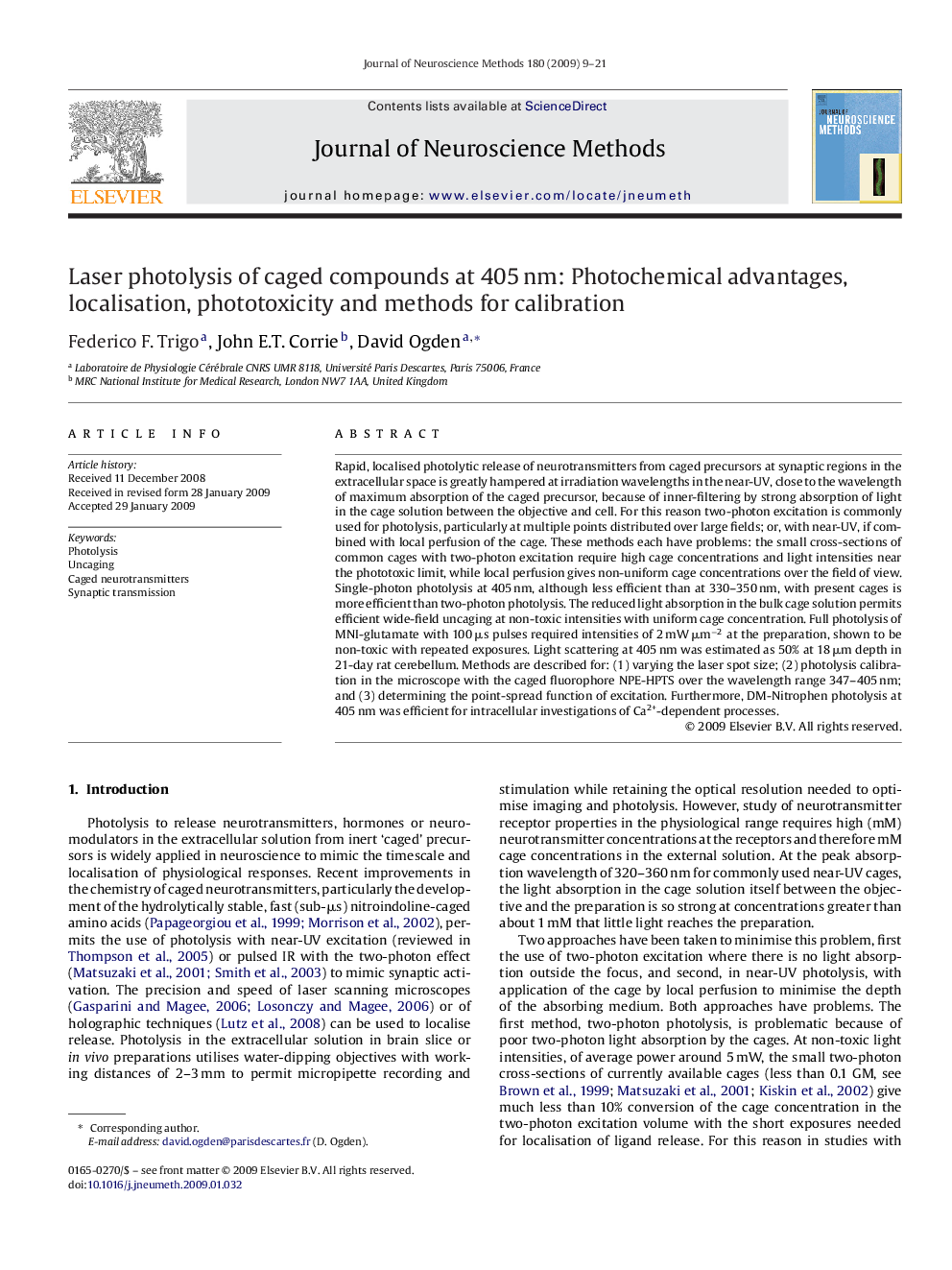| Article ID | Journal | Published Year | Pages | File Type |
|---|---|---|---|---|
| 4336148 | Journal of Neuroscience Methods | 2009 | 13 Pages |
Rapid, localised photolytic release of neurotransmitters from caged precursors at synaptic regions in the extracellular space is greatly hampered at irradiation wavelengths in the near-UV, close to the wavelength of maximum absorption of the caged precursor, because of inner-filtering by strong absorption of light in the cage solution between the objective and cell. For this reason two-photon excitation is commonly used for photolysis, particularly at multiple points distributed over large fields; or, with near-UV, if combined with local perfusion of the cage. These methods each have problems: the small cross-sections of common cages with two-photon excitation require high cage concentrations and light intensities near the phototoxic limit, while local perfusion gives non-uniform cage concentrations over the field of view. Single-photon photolysis at 405 nm, although less efficient than at 330–350 nm, with present cages is more efficient than two-photon photolysis. The reduced light absorption in the bulk cage solution permits efficient wide-field uncaging at non-toxic intensities with uniform cage concentration. Full photolysis of MNI-glutamate with 100 μs pulses required intensities of 2 mW μm−2 at the preparation, shown to be non-toxic with repeated exposures. Light scattering at 405 nm was estimated as 50% at 18 μm depth in 21-day rat cerebellum. Methods are described for: (1) varying the laser spot size; (2) photolysis calibration in the microscope with the caged fluorophore NPE-HPTS over the wavelength range 347–405 nm; and (3) determining the point-spread function of excitation. Furthermore, DM-Nitrophen photolysis at 405 nm was efficient for intracellular investigations of Ca2+-dependent processes.
